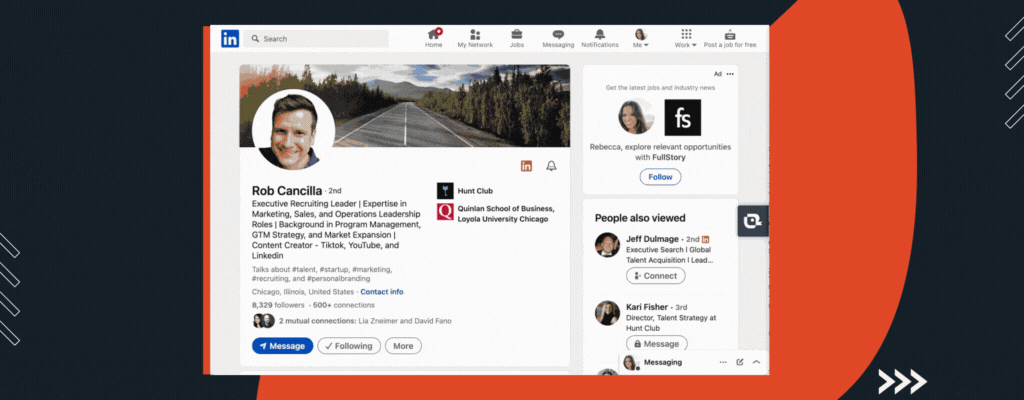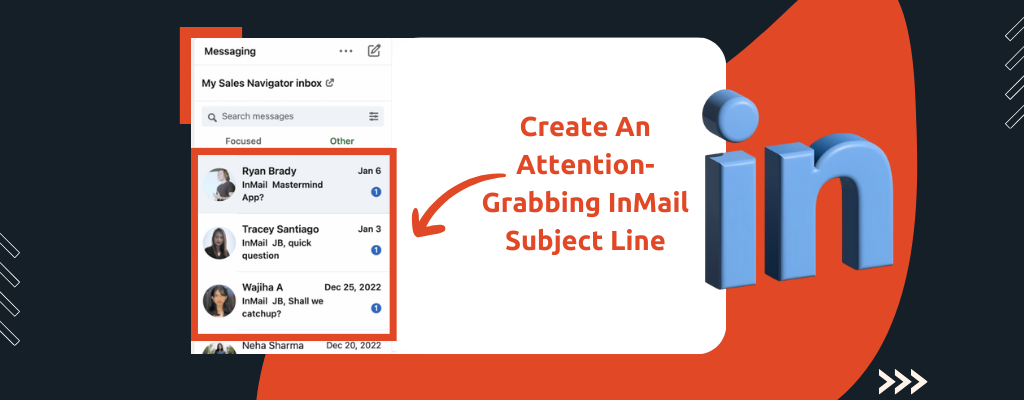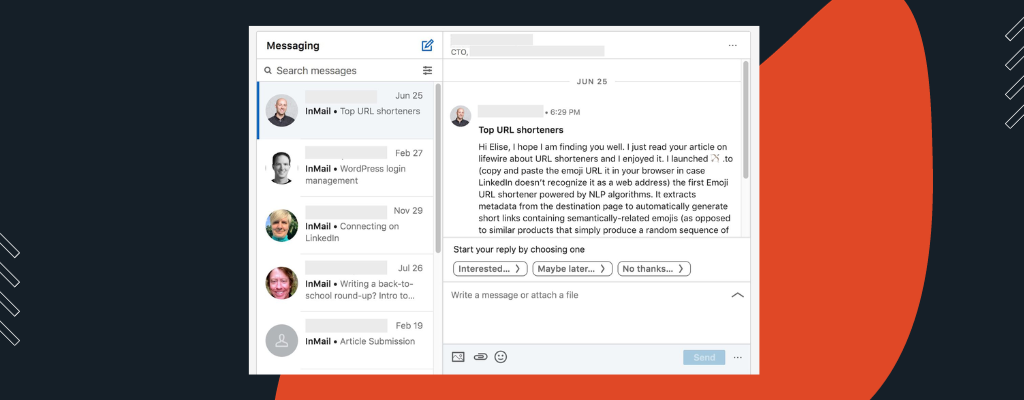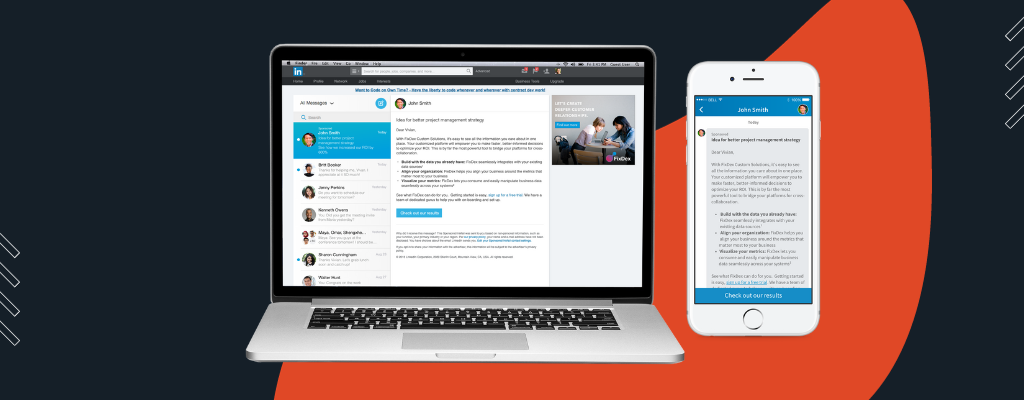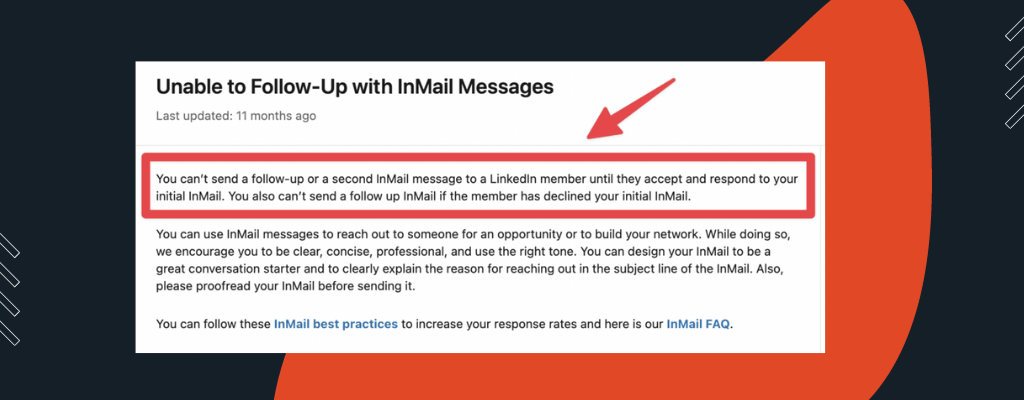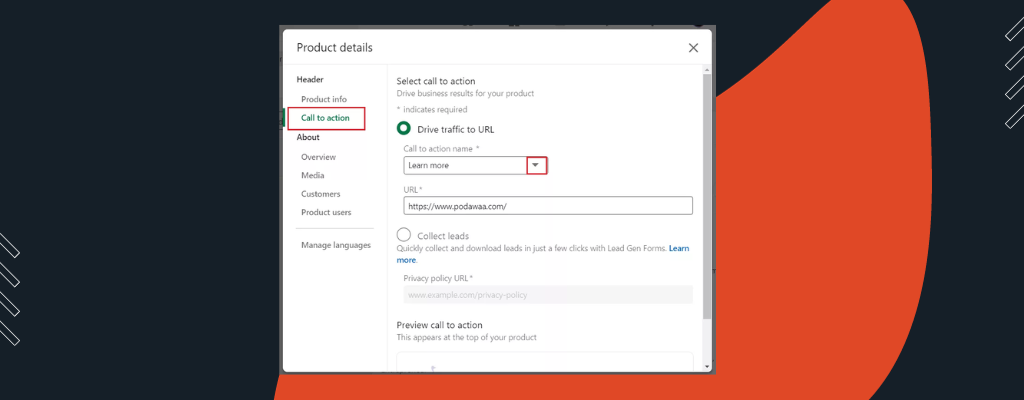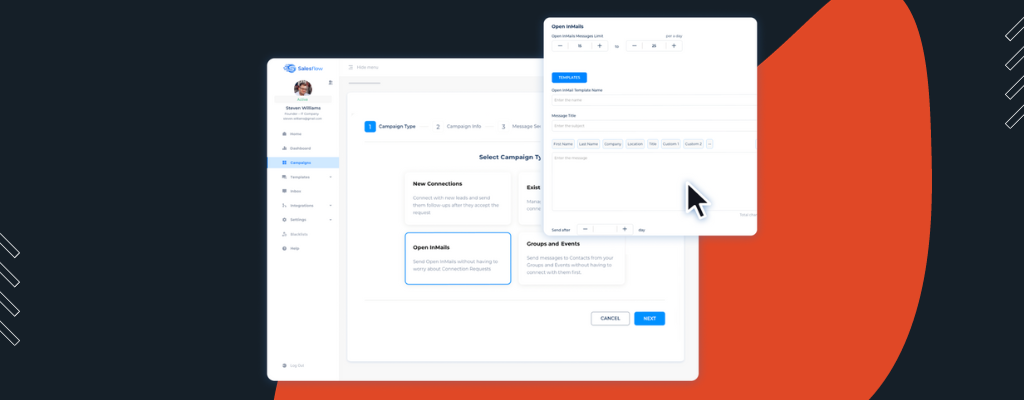Table of Contents
- 1. Select Your Target with Care
- 2. Have a Well-Optimized LinkedIn Profile
- 3. Create An Attention-Grabbing InMail Subject Line
- 4. Personalize Your InMail Messages
- 5. Initiate a Conversation
- 6. Be Concise with Your InMail
- 7. Add a Call-to-Action (CTA)
- 8. Send Follow-Up Messages
- 9. Avoid Sending InMails on Weekends
- 10. A/B Test Your InMail Messages
LinkedIn is a social platform for professionals where businesses, brands, and industry professionals can connect and share ideas. With such a massive audience, it’s no surprise that many brands use LinkedIn’s private messaging system, InMail, to reach new prospects for their businesses. But with so many businesses competing for users’ attention in their inboxes, how can you distinguish yourself from the crowd and increase the response rate of your LinkedIn InMail marketing campaign?
To improve the success rate of your LinkedIn InMail marketing campaign, it’s essential to adhere to the best practices that enhance your chances of success. In this article, we’ll explore 10 LinkedIn InMail best practices to help you foster meaningful connections and drive business growth.
Let’s have a look at the top 10 LinkedIn InMail best practices!
Top 10 LinkedIn InMail Best Practices
1. Select Your Target with Care
Remember, you only get a limited number of LinkedIn InMails, so it’s essential not to send them to every user you see on LinkedIn. Reserve your InMails for high-value targets who are aligned with your sales objectives. Tailor your InMail approach based on different Ideal Customer Profiles (ICPs), as some industries have a higher InMail open rate than others. You can leverage the LeadDelta Sidebar to import targeted users outside your network for research and future engagement. When the time comes, you can just filter your network from the imported connections and initiate contact via InMail. It’s a strategic way of keeping track of key contacts.
2. Have a Well-Optimized LinkedIn Profile
When someone sends you a connection request, what’s the first thing you do? You’ll probably click on their LinkedIn profile to understand who they are, the purpose behind their contact, and what value they bring. Right? This is exactly what everyone you send an InMail will do. This practice is especially true for InMail because they know InMail often revolves around a sales pitch.
Prioritize refining your LinkedIn profile before initiating any InMail outreach. Consider the following
- Choose a professional yet approachable profile image.
- Utilize your banner to convey your professional identity.
- Showcase your services/offerings in the featured section.
- Craft a compelling narrative through your experience and about section.
- Ensure to have a professional LinkedIn URL.
Optimizing your LinkedIn profile sets the stage for your recipients to assess and comprehend your identity effectively. Remember, making a positive first impression is crucial.
3. Create An Attention-Grabbing InMail Subject Line
The initial element that captures attention in an InMail is the subject line. It serves as the catalyst for someone to either open the InMail or disregard it. That’s why you should never ignore the significance of it. Keep your InMail subject line concise, relevant, and intriguing. Ensure that your subject line reflects the value or solution you’re offering.
Consider these guidelines to craft a compelling and attention-grabbing subject line:
- Inject a personal touch or reference a familiar topic to swiftly capture attention.
- Address the recipient directly by including their first name.
- Keep the subject line short, sweet, and straight to the point
- Integrate specific keywords that resonate with your target
- Add power words to make the InMail catchy and memorable
4. Personalize Your InMail Messages
Are you aware that personalized InMails outperform generic ones by 15%? Yes, generic, mass-sent messages are likely to be ignored. Personalization is key to establishing a genuine connection.
So, enhance the personalization of your LinkedIn InMail by thoroughly researching your prospect’s profile and identifying their potential pain points, common interests, connections, and work experiences, then leverage those insights to tailor your InMail message specifically to the recipient, addressing how your offering can directly benefit them.
5. Initiate a Conversation
An InMail should never be a mere sales pitch; instead, it should extend an invitation to connect and engage in meaningful conversation. Building long-lasting relationships through conversation paves the way for new sales and opportunities. Crafting InMail messages with natural, conversational language fosters a more meaningful connection with your recipients. Choose words that mirror your personal voice while ensuring professionalism, and avoid using complex language or jargon that may inadvertently lend a sales pitch tone to the message.
Once your InMail and connection request are accepted, initiate the conversation by highlighting something intriguing you discovered about the person or expressing the specific reason you sought to connect. This initial engagement sets the tone for a more personalized and meaningful interaction.
6. Be Concise with Your InMail
Given that over 50% of InMails are read on mobile phones, a good way to enhance response rates involves crafting concise messages with 400 characters or fewer. Because shorter InMails consistently outperform longer ones.
It’s crucial to keep in mind that the purpose of the InMail is to extend an invitation for connection and discussion, therefore, InMails should have straightforward content. Resist the urge to overexplain the reason behind the InMail, and carefully trim your message to ensure conciseness without losing the clarity of the message.
7. Add a Call-to-Action (CTA)
Guide the recipient on the next steps by including a clear and concise call-to-action. Whether it’s scheduling a call, exploring a demo, or requesting further information, a well-defined CTA streamlines the communication process.
Capture interest with your initial message, and tell your recipient what you want them to do. A simple “How about a 15-minute phone call this Thursday at 12 PM? Let me know your thoughts.” is all you need to go from connection to action. This way, you can lay the foundation for a LinkedIn InMail marketing campaign that achieves conversions.
8. Send Follow-Up Messages
Admittedly, not everyone will respond to your initial InMail, and that’s perfectly fine. There could be various reasons for non-responsiveness, from oversight to other considerations.
If you really want to establish a connection with them, it’s your responsibility to follow-up them. However, it’s important to note that LinkedIn restricts the sending of InMail follow-ups until the recipient accepts and responds to your initial InMail message. You also can’t send a follow-up InMail, if your initial InMail is declined. So, if you want to follow-up after an InMail, you must use email or LinkedIn messages. But when you’re sending follow-up messages, just avoid being too spammy, as this approach is generally unwelcome.
9. Avoid Sending InMails on Weekends
While it may sound cliche, the timing of your LinkedIn InMail messages plays a pivotal role. We’ve got to follow some do’s and don’ts when it comes to reaching out to people. According to LinkedIn data, Fridays and Saturdays tend to have the lowest average response rates for InMails, with Monday emerging as the top-performing day.
So, avoid weekends and focus on sending InMails from Monday to Thursday. LinkedIn is primarily a professional networking platform used for business, and people generally prefer not to be contacted over the weekend. Adhering to this LinkedIn InMail best practice enhances your chances of connecting with more individuals and securing a higher response rate.
10. A/B Test Your InMail Messages
Embrace experimentation in your LinkedIn InMail campaign by tweaking the messaging here and there. A/B testing is a technique commonly employed by marketers to identify the most effective elements in digital marketing campaigns and web design. When applied to LinkedIn InMail messaging, A/B testing can provide valuable insights into how to successfully engage your target audience and initiate a response from them.
For example, consider running two versions of a LinkedIn InMail marketing campaign targeting two different prospects for the same product or service. One version can be direct and provide details about the offering and its benefits, while the other remains more ambiguous. By analyzing the outcomes of both campaigns, you can understand which one attracts more prospects and use those valuable insights to optimize future campaigns.
Conclusion
InMail stands out as one of the most effective ways to capture the attention of your targeted LinkedIn users and unlock new opportunities. Now that you’re armed with the top 10 LinkedIn InMail best practices, it’s time to put them into action.
Keep in mind that there’s no follow-up InMail. Once your prospect accepts your InMail, it transforms into a ‘direct message.’ Your initial InMail is your sole chance, as prospects can either accept or decline it. Therefore, always opt for a low-friction call-to-action to get them to reply.
This guide aims to equip you with the essential tips to improve your LinkedIn InMail response rate. If you find this information valuable, show your appreciation through likes, comments, and shares!


